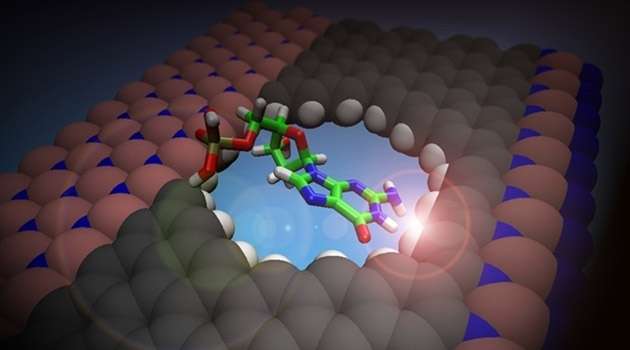Liquid nanosensors Liquid nanosensors PhD in Nano-Microelectronics
Researcher and author: Dr. ( Afshin Rashid)
Note: Liquid nanosensors, which have a common liquid gate, are arranged in eight separate sub-regions, which are electrochemically modified with eight different nano-electrochemical receptors.
Progressive magnification of Liquid nanosensors , in which p- scanned SiNWs form a common source (middle electrode) with the surrounding discharge electrodes. Nano-electrochemically different sub-regions are created by the simultaneous flow of different silane derivatives on their designated pads, using a special eight-channel liquid device. Design Nano Sensors Liquid Liquid nanosensors with eight sub-regions of the chemical. The electronic properties of carbon nanotubes are highly sensitive to the chemical environment around the nanotubes. This sensitivity is a suitable tool for using nanotubes in the field of Liquid nanosensors .
How nano-sensors Liquid Liquid nanosensors to detect the human nose is like; Methods of nano-sensors Liquid Liquid nanosensors today as one of the modern and advanced techniques for nano-electronics counts. These methods are part of the acquisition Information process in which information about the chemical nature of the environment is provided instantly. In this process, an amplified electrical signal is generated as a result of the presence and interaction of a chemical particle with a sensing layer. Therefore, chemical sensing consists of two main and key stages, which are detection and amplification. The device that performs the above process is called a nano-electrochemical sensor. Liquid nanosensors It is a device that provides direct information about the chemical composition of its environment and provides it to us in the form of an electrical, optical, etc. signal. In Liquid nanosensors, the interaction of electron nanoparticles is absorbed, which changes the electrical conductivity at the surface of Liquid nanosensors . Absorption of small amounts of nanoelectrons with very low molecular motion changes the resistance of Liquid nanosensors , which is proportional to the concentration in Liquid nanosensors .
Conclusion :
Liquid nanosensors, which have a common liquid gate, are arranged in eight separate sub-regions, electrochemically modified with eight different nano-electrochemical receptors.
Researcher and author: Dr. ( Afshin Rashid)
PhD in Nano-Microelectronics




